
Dyserth Quarry and Limeworks
There has been mining and quarrying in Dyserth for centuries. Lead mining was taking place even before the Roman occupation, and quarrying goes as far back as the
13
th
century at least, when some of the stone would have been used to build the castle.
There were at one time several small quarries along the foot of Moel Hiraddug; the stone from one of them, the Jubilee Quarry, was used to surface the road, Ffordd
Glai, which was as its name suggests, a muddy track. It is now Ffordd Ffynnon. As it lay on the boundary between Dyserth and Cwm parishes, Dyserth provided the
stone, and Cwm the transport for it.
Before the arrival of the Chester to Holyhead railway in 1848 the stone would have been transported by horse-drawn carriages and then by river from the port at
Rhuddlan. A branch line to Dyserth was built in the 1860s for the mine and the quarrying.
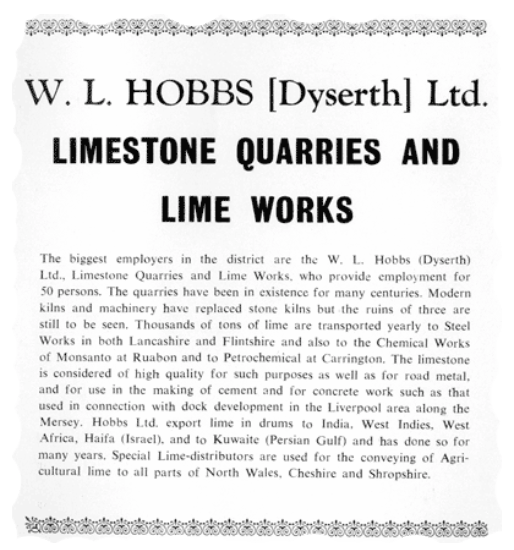
From a Dyserth Festival Brochure, 1958
The main quarry, which remained operative until the early 1980s, was, at the beginning of
the last century owned by W.L. Hobbs. In the early 1900s this provided employment for 40
men, under the manager, Mr. T Johnson Humphreys. This quarry supplied limestone to
Mostyn Ironworks, and lime in various forms was of more than local importance. The
London and North Western Railway opened a mineral line from the main Chester-Holyhead
line to Dyserth. The problem then was to get the stone from the quarry to the railway.
Narrow-gauge rail lines took trucks to and from the quarry on a bridge over the road to the
kiln. From there a two-way ramp ran down the slope to a siding. Full trucks going down
would pull up the empty ones.
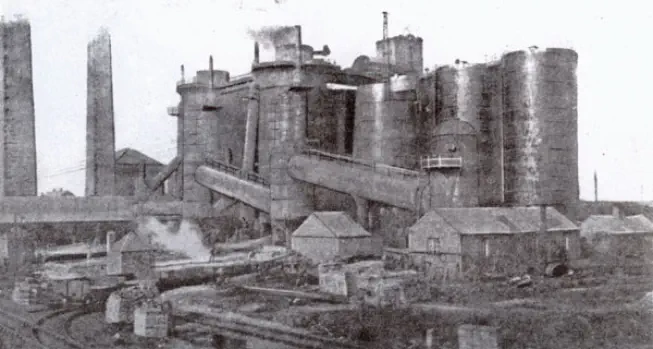
Mostyn Ironworks c1910
A further obstacle was a bridge over the river which was not strong enough to take the weight of a locomotive. So the engine would bring empty trucks up as far as the
bridge, reverse back a certain distance along the line, then get up speed, and give the trucks a good push to send them over. Then it would be the job of a couple of men to
catch and stop them. this was not always easy. Too hearty a push sent them too far and one truck at least was known to go over into Pandy lane. Two quarry horses, Prince
and Sam, would be used to haul the full trucks back over the bridge to the waiting engine. Dorothy Hobbs, the daughter of the owner, noted for her powerful voice, acted as
foreman.
Forty men worked the quarry in the early 1900s, then owned by W.L. Hobbs and managed by Mr T Johnson Humphreys. Hobbs’ house, Greenfield, in Fford Ffynnon still
stands. The quarry bell rang time bells at 7.a.m., 9.a.m., 12 noon and 5p.m. On Saturday mornings the quarrymen collected their wages from the quarry office (now the
surgery on the corner of Pandy Lane) and the villagers could buy a lump of lime to whitewash their cottages.
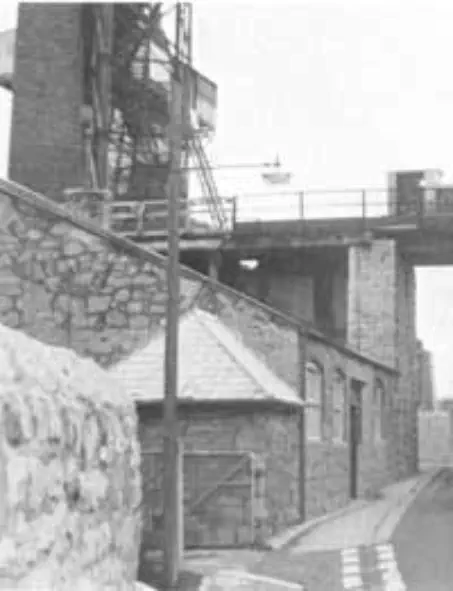
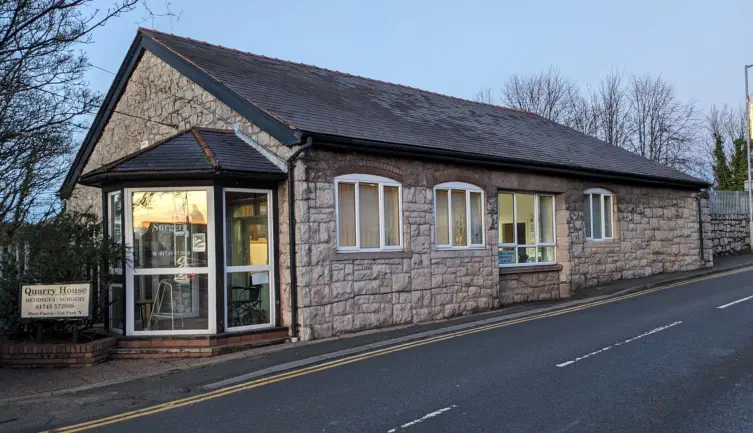
The Quarry Office in 1967, left, and the same building, pictured in 2023 now Quarry House Surgery
The quarry ceased production in the 1980s. Some Dyserth residents breathed a sigh of relief, for the quarry
blasting had sometimes been so strong that rocks would land hundreds of yards away.
On 17th February 1972 Sir Anthony Meyer (MP for Flint, West) said in Parliament:-“Quarries are a very sore point in Flintshire at present. Last Friday a shattering
explosion of the limestone quarry at the village of Dyserth sent huge boulders crashing through roofs and windows in the village. Three schoolchildren were injured in their
classroom and a number of cars were totally destroyed. It was a miracle that no one was killed. The people of Dyserth are demanding that no further blasting be allowed at
this quarry. It is certainly unthinkable that operations should be resumed there until the most thorough examination, including the most meticulous geological examination
of the rock structure, has been most carefully and painstakingly completed. Even then it is, to my mind, most unlikely that the mining company will ever be able to give the
people of Dyserth the kind of assurances which will set their minds at rest. Unless it can do so, I ask that all blasting operations at this quarry should cease permanently.”
For the full Hansard article, click here For newspaper reports click here
Click below for an account of the incident on Friday 11
th
February 1972 from Mrs Wenna Williams, Head of Infants at the time. Recorded in February 2020
As well as quarrying there had also been a number of lime kilns, the largest of these, Dyserth Lime Works, used to dominate the village skyline.
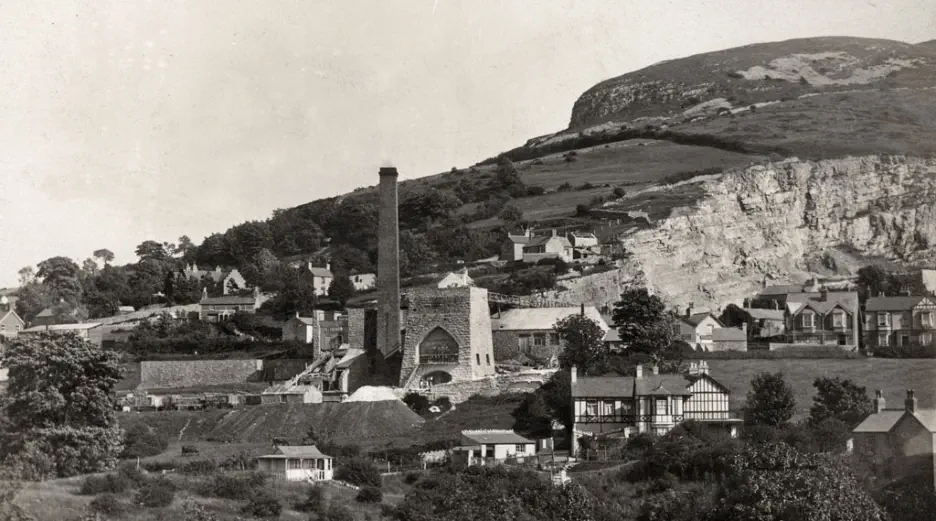
Dyserth Limeworks from a postcard posted in 1910
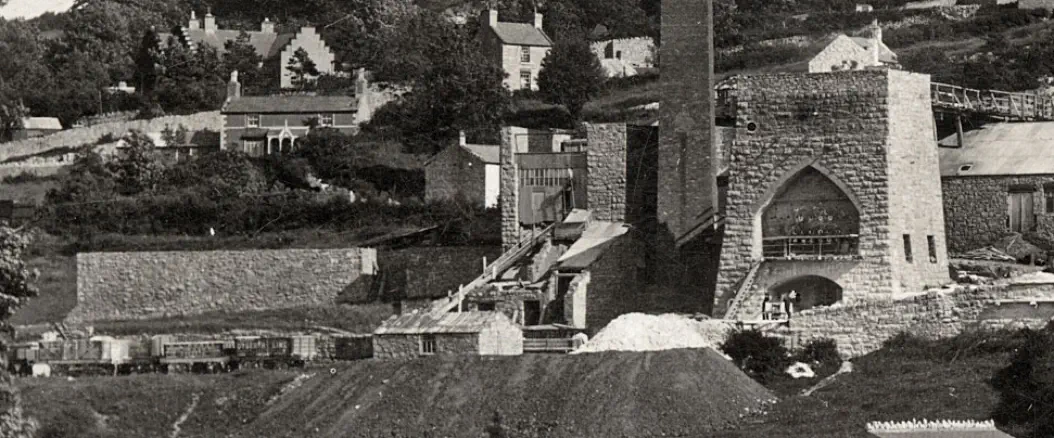
An enlarged section from the above picture - note the railway wagons, bottom left

Some of the kilns on Upper Foel Road,
from a postcard posted in 1910
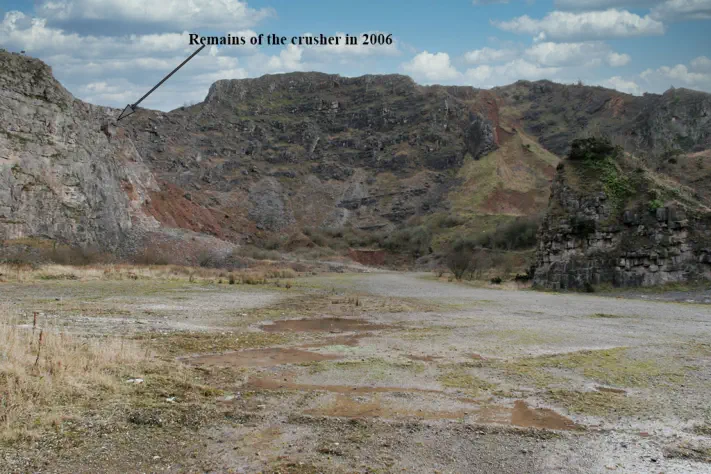
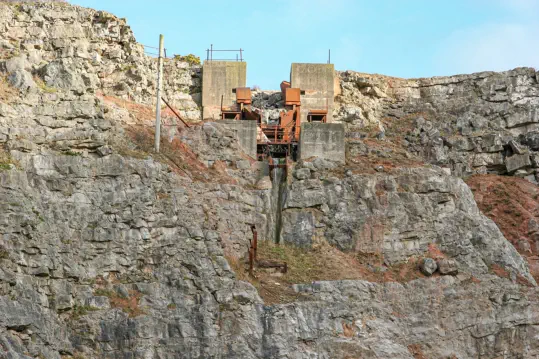
The crusher was high up on the eastern side of the lower quarry.
It was removed in the 1980s. I took these two photos in 2006.
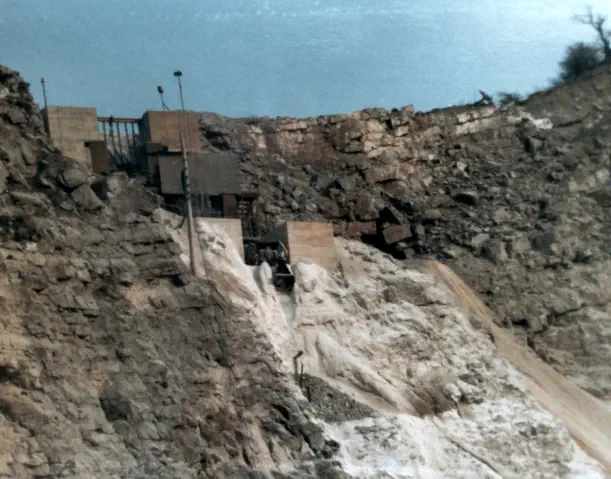
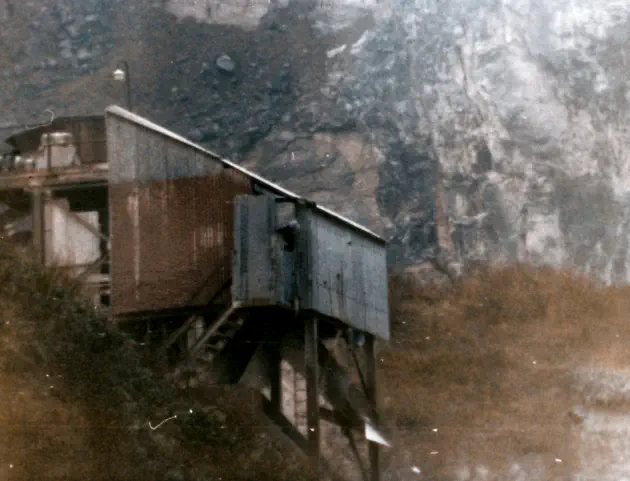
The crusher, photographed by Kevin Evans while it was still in use - 1960 or 70s.
Some of the 7-inch rock it produced was fed to the Granulator.
The Granulator - this reduced the stone further, to chippings and dust, which were
sent by a conveyor belt to ‘the bins’. Dewi Jones can just about be seen in a window
on the right. Another photo by Kevin Evans.
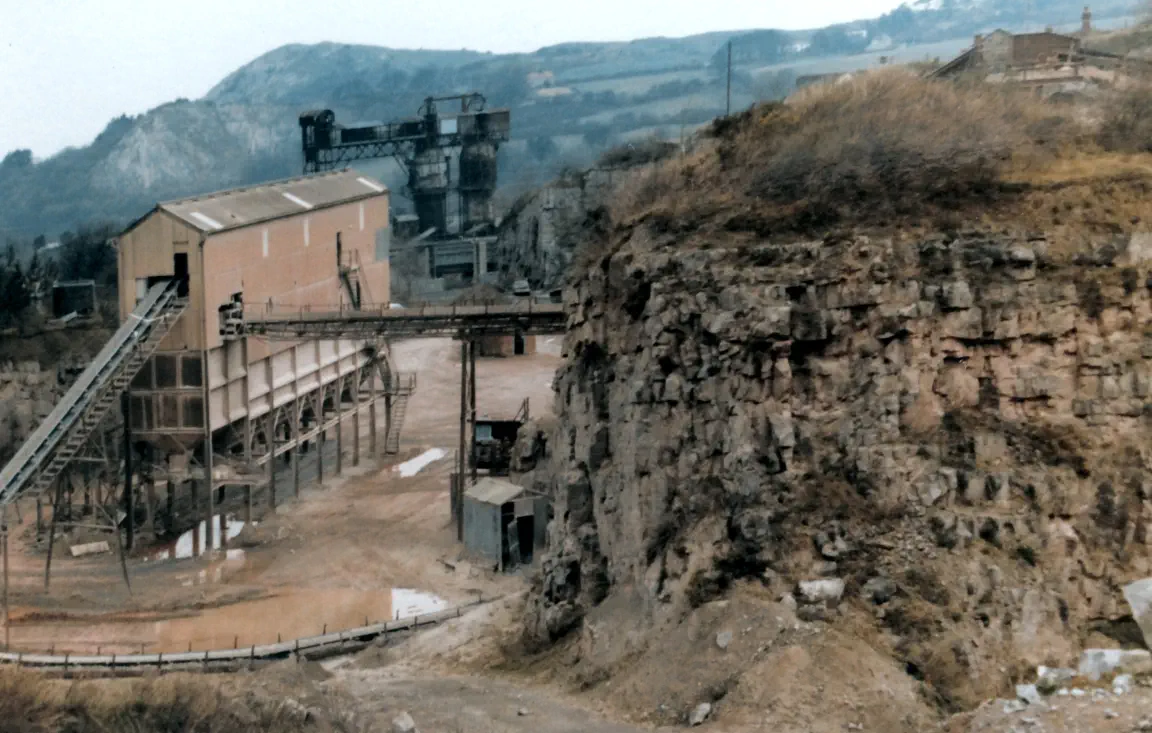
The huge building - long gone - was known as ‘the bins’.The stone chippings and dust went across on a conveyor belt, to be loaded in to lorries.
The kilns can be seen in the background.
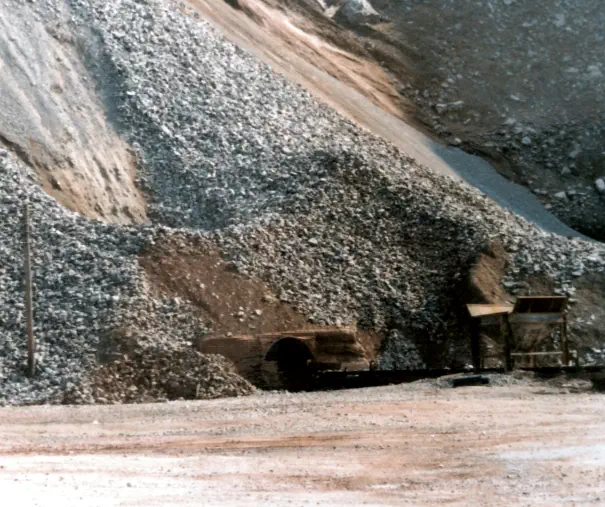
Some of the 7-inch output from the crusher didn’t
go through the granulator. It was loaded on to a
small train that ran over the road to the lime kilns
on the other side of the Trelawnyd Road.
Kevin Evans worked on the weighbridge, these are
two more of his photos, above and left
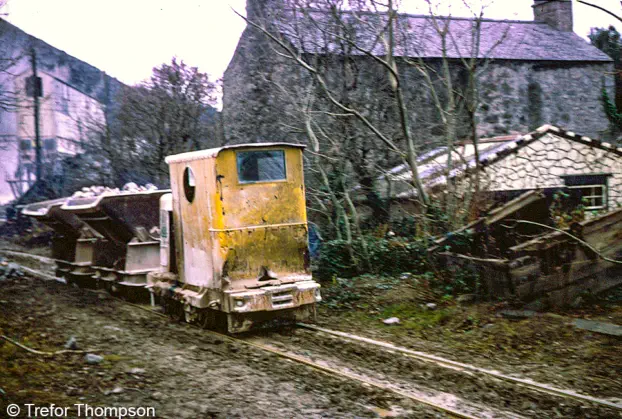
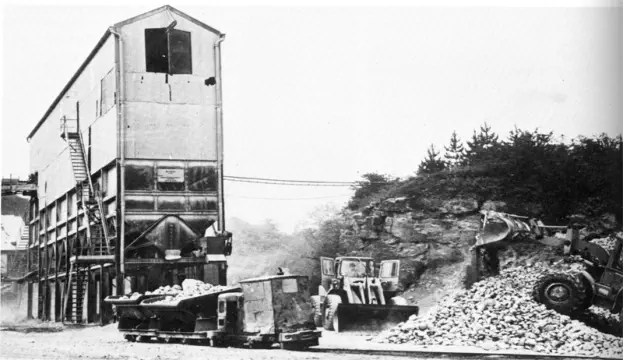
A photo from around 1973 shows ‘the bins’ with its hoppers for loading
dust and various sized chippings into lorries for transportation to various
customers.
In the foreground is the small train that carried rock over the road to
the lime kilns, also shown above.
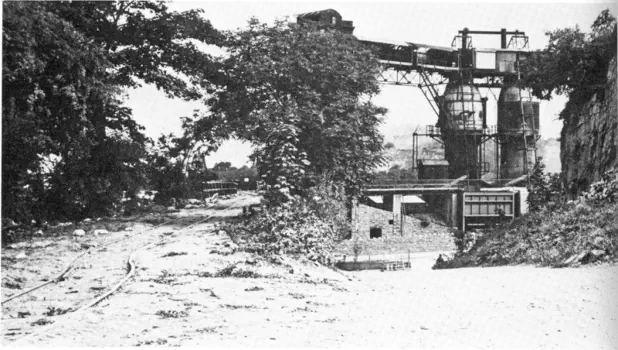
From the quarry, 1973, looking towards the lime kilns on the other side of
the road. Trelawnyd Road is just about visible in the lower right of the
picture, below the stone wall.
The kilns in the background and in the photo below had replaced the old
stone one in the 1910 photo higher up.
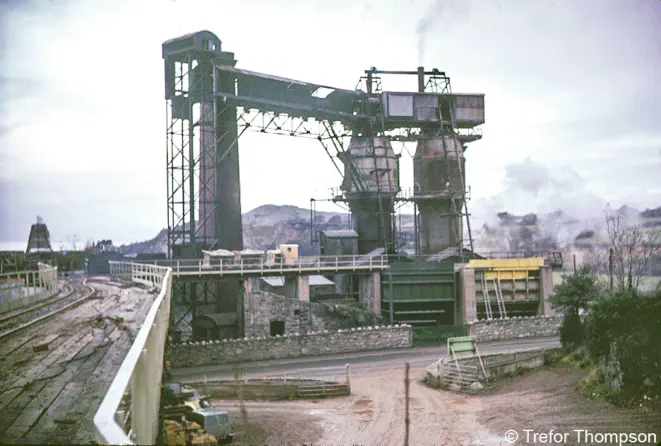
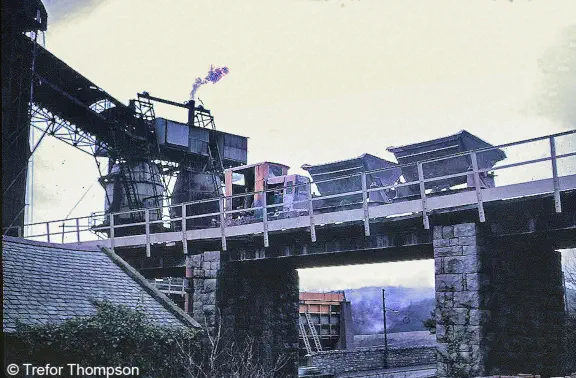
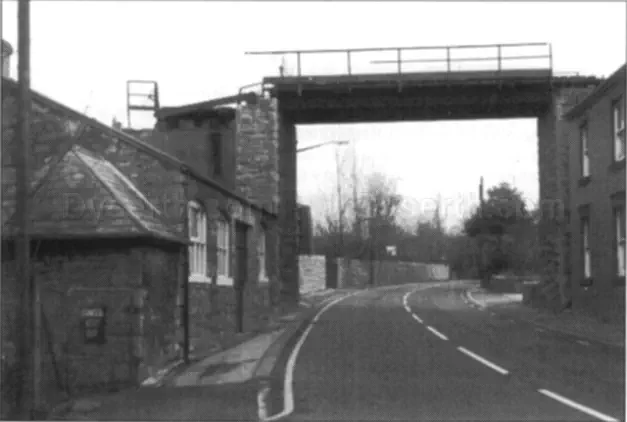
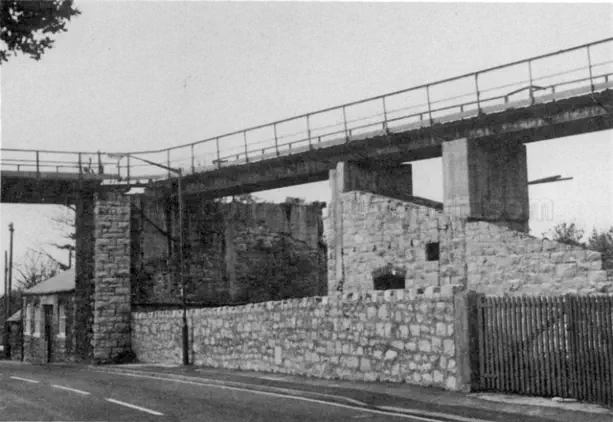
What is now the Surgery, on the left, with the bridge that carried the light railway.
From the other direction, the old quarry office (now the Surgery) can just be
seen through the bridge. The bridge was demolished in the 1980s.
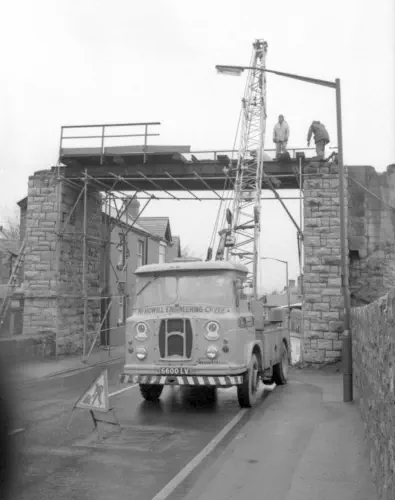
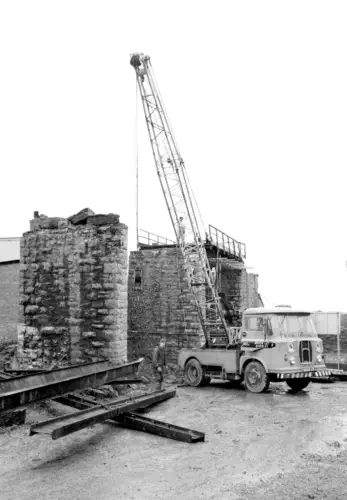
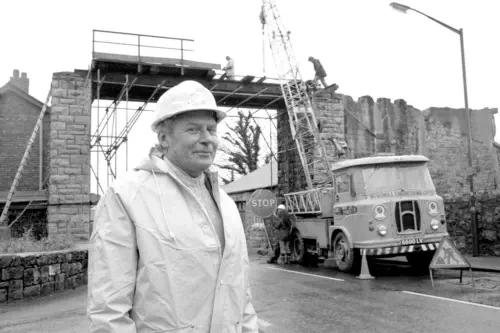
Photos from Barry Hamilton of the bridge being removed,
exact date unknown
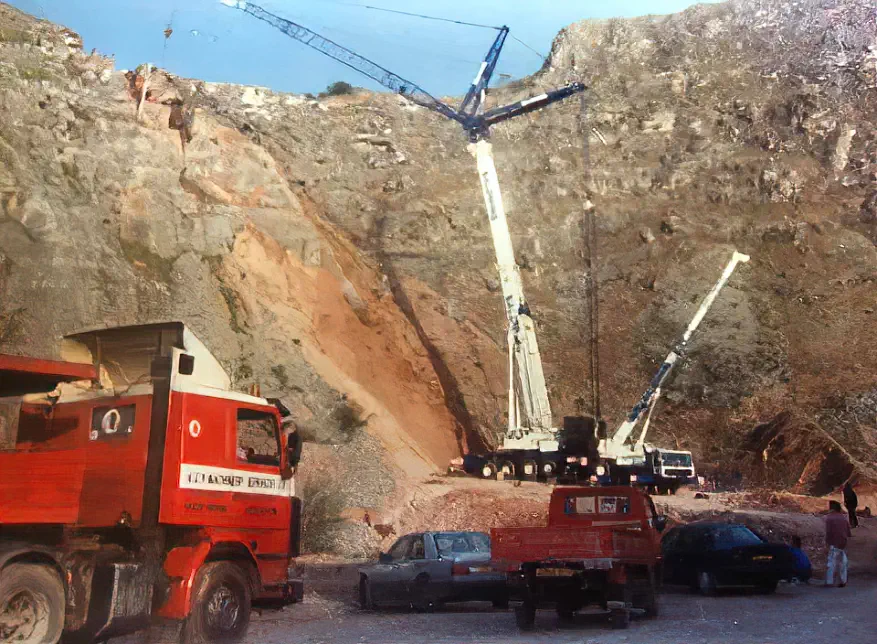
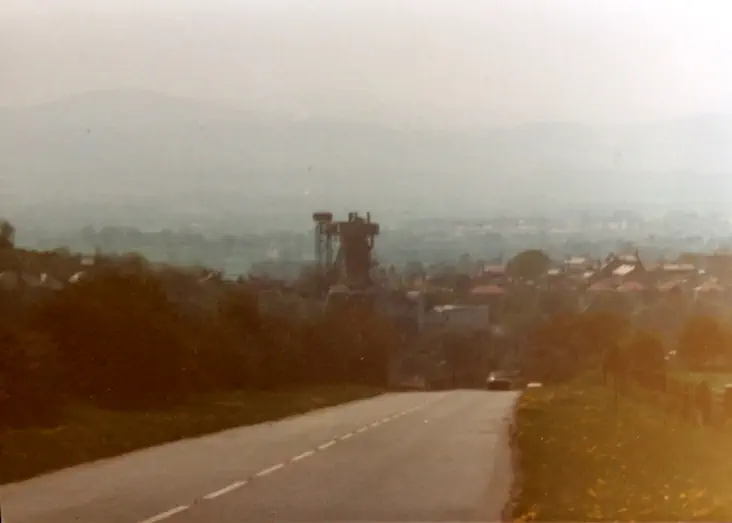
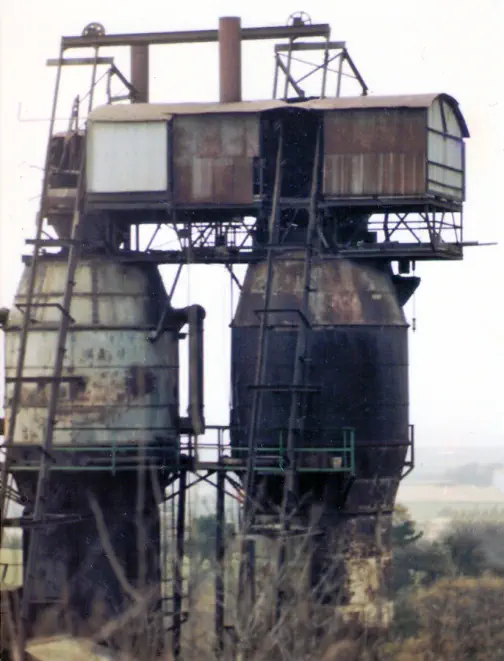
Kevin Evans
Photo from Brian Mitchell
The lime kilns as they once appeared; approaching Dyserth from Trelawnyd.
And a picture of the kilns, taken about 1977,
not long before they were demolished.
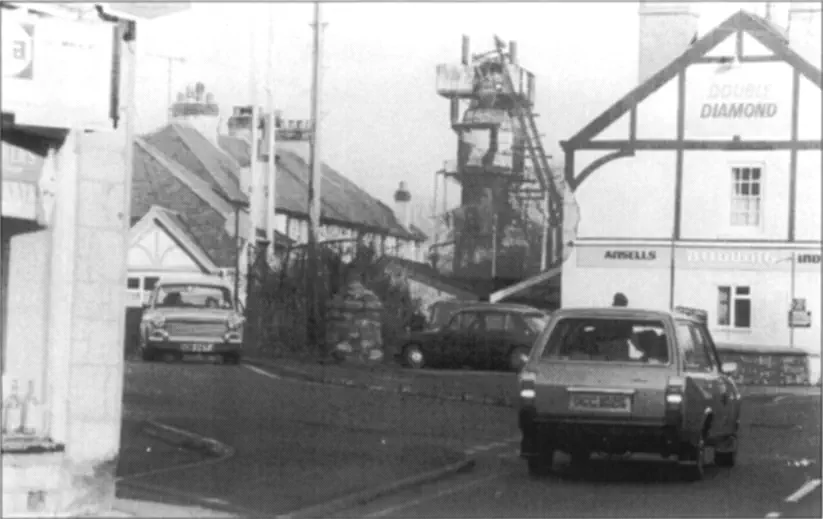
The kilns and the
Bodunig from the
High Street
Removal of the crusher in the 1980s - photo from Gareth Rogers
There are the remains of five lime kilns along Upper Foel Road - these are now owned by Dyserth Community Council.
No.1 is not visible or accessible.
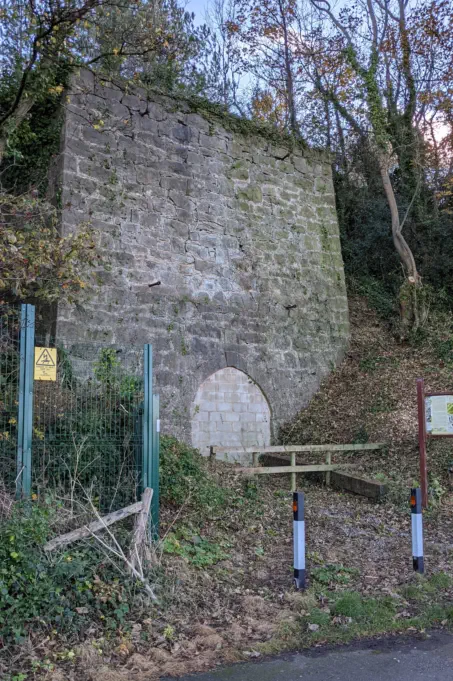
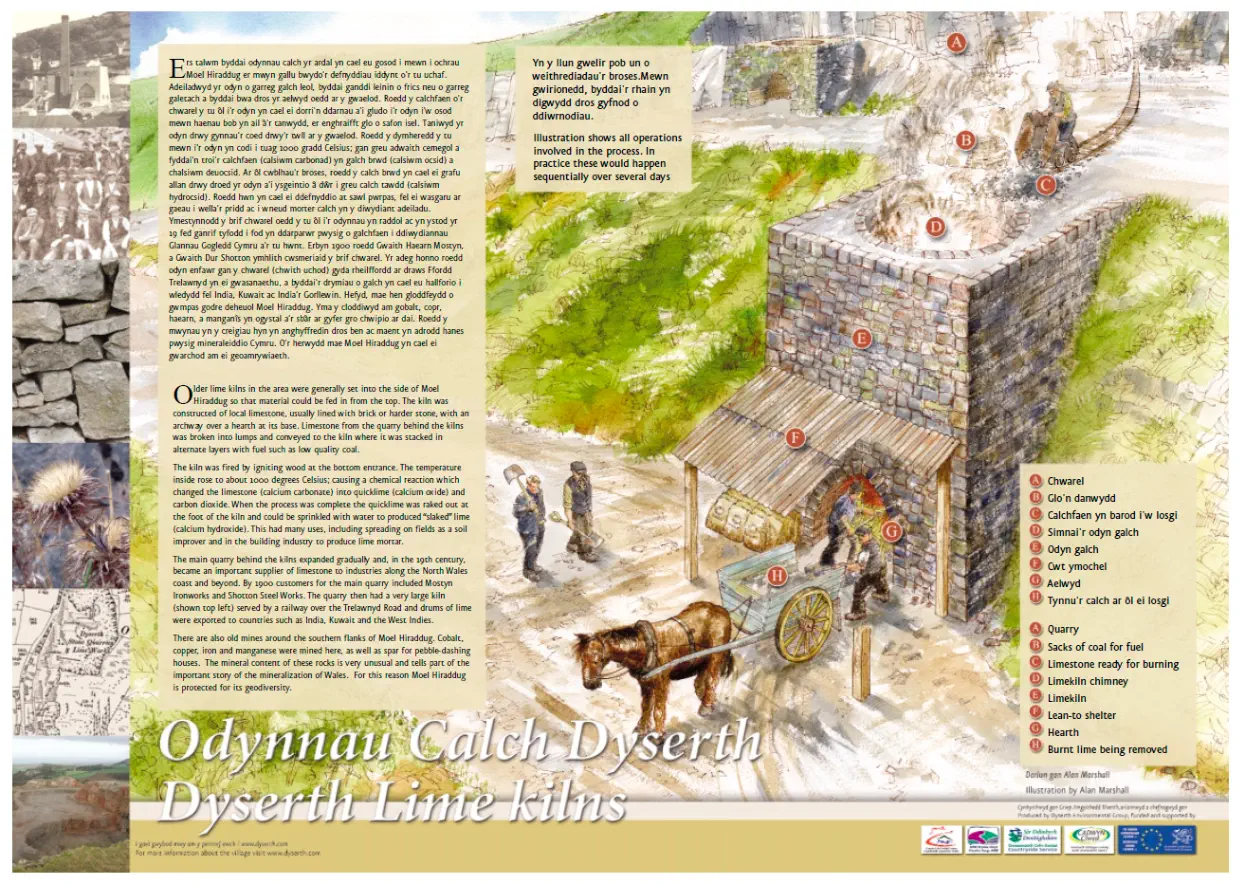
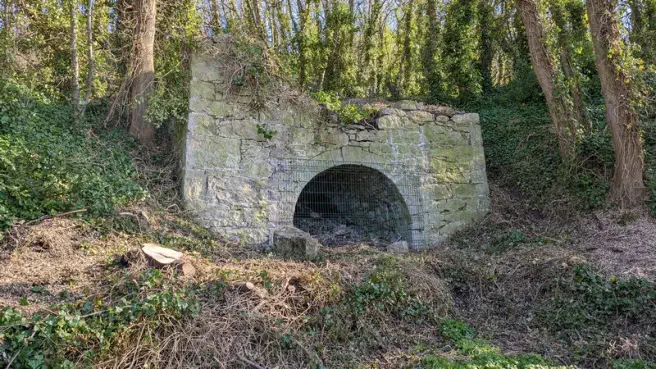
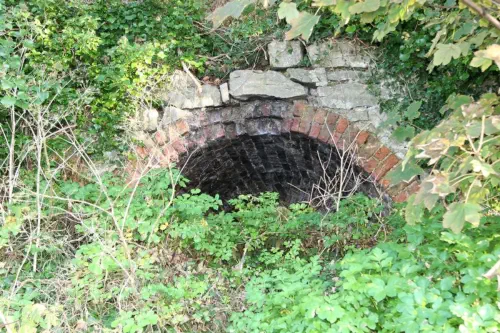
Kiln No. 2 - Grade 2 listed
Kiln No. 3
Kiln No. 5
Kiln No.2 has an information
panel provided by Dyserth
Environmental Group, as
shown below
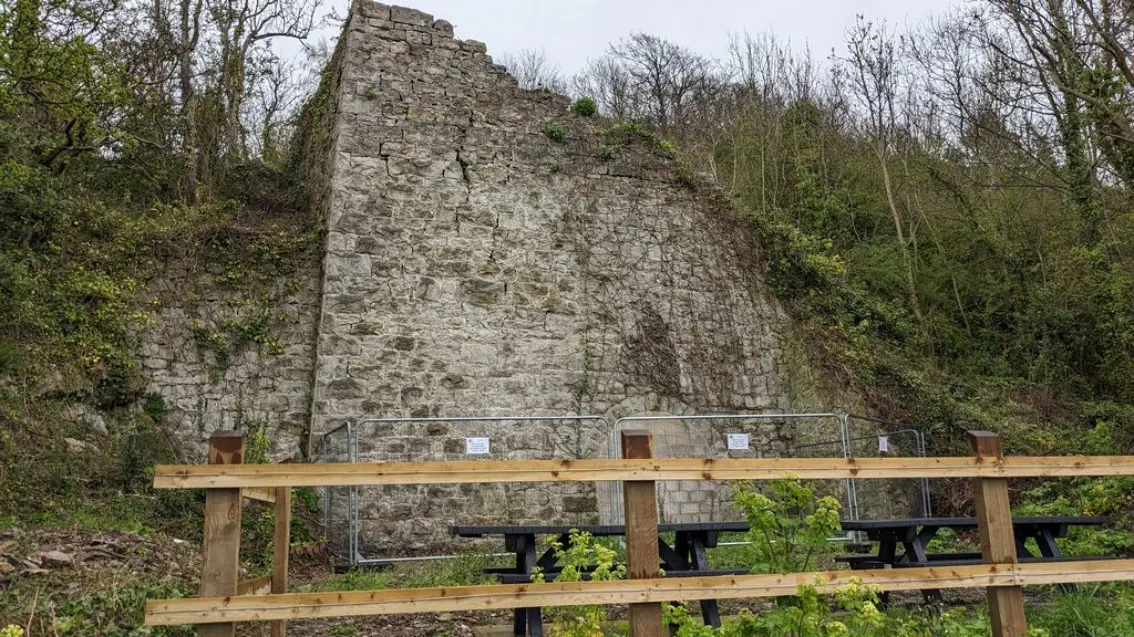
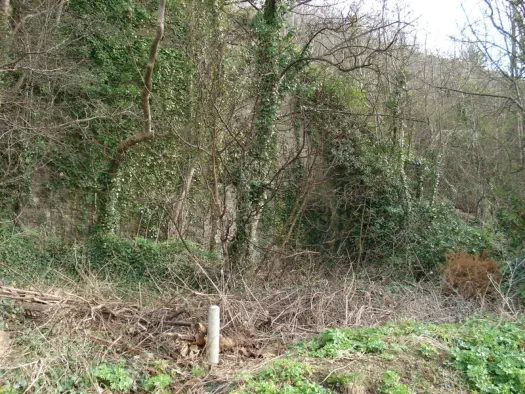
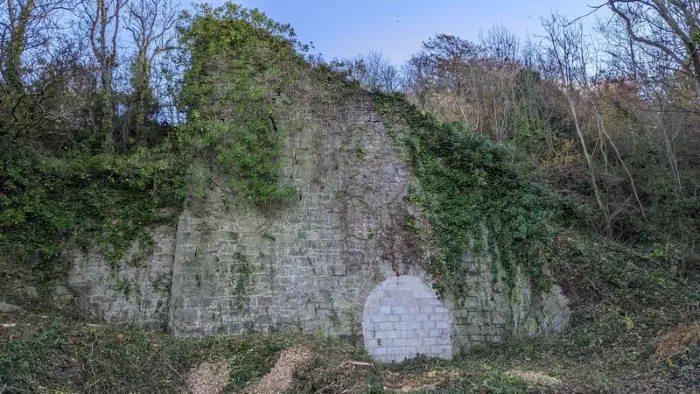
Kiln No.4 is Grade II Listed and until 2021 was almost invisible
Kiln No.4 in 2009
Kiln No.4 in 2021
In April 2023
Quarry & Limeworks
1963 Video from Barry Hamilton
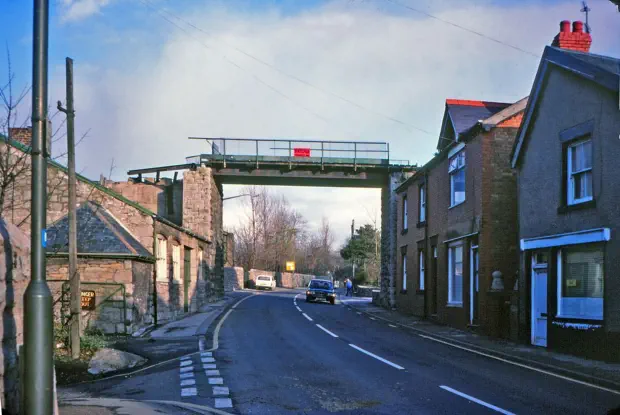
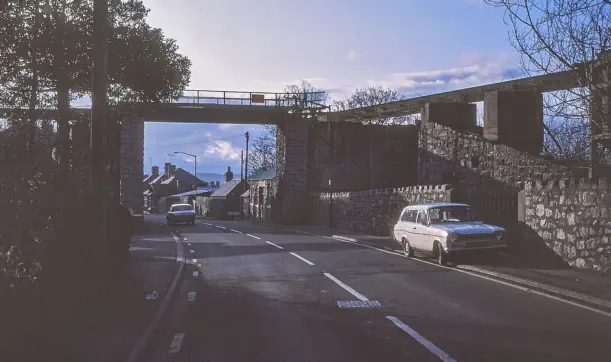
These four photos of the bridge were taken by Lucy Davies,
the colour ones were taken in 1982

From the Hants and Sussex News,
Wednesday 29th May 1912

Dyserth Quarry and Limeworks
There has been mining and quarrying in Dyserth for
centuries. Lead mining was taking place even before the
Roman occupation, and quarrying goes as far back as the
13
th
century at least, when some of the stone would have
been used to build the castle.
There were at one time several small quarries along the foot
of Moel Hiraddug; the stone from one of them, the Jubilee
Quarry, was used to surface the road, Ffordd Glai, which was
as its name suggests, a muddy track. It is now Ffordd
Ffynnon. As it lay on the boundary between Dyserth and
Cwm parishes, Dyserth provided the stone, and Cwm the
transport for it.
Before the arrival of the Chester to Holyhead railway in 1848
the stone would have been transported by horse-drawn
carriages and then by river from the port at Rhuddlan. A
branch line to Dyserth was built in the 1860s for the mine
and the quarrying.
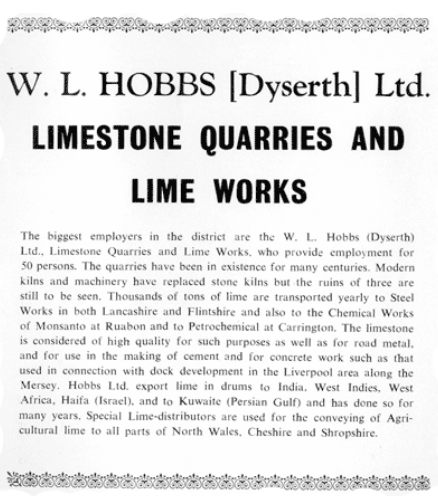
From a Dyserth Festival Brochure, 1958
The main quarry, which remained operative until the early
1980s, was, at the beginning of the last century owned by
W.L. Hobbs. In the early 1900s this provided employment for
40 men, under the manager, Mr. T Johnson Humphreys. This
quarry supplied limestone to Mostyn Ironworks, and lime in
various forms was of more than local importance. The London
and North Western Railway opened a mineral line from the
main Chester-Holyhead line to Dyserth. The problem then
was to get the stone from the quarry to the railway. Narrow-
gauge rail lines took trucks to and from the quarry on a
bridge over the road to the kiln. From there a two-way ramp
ran down the slope to a siding. Full trucks going down would
pull up the empty ones.
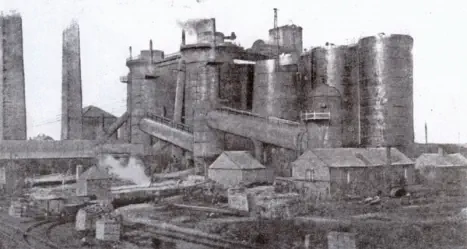
Mostyn Ironworks c1910
A further obstacle was a bridge over the river which was
not strong enough to take the weight of a locomotive. So
the engine would bring empty trucks up as far as the
bridge, reverse back a certain distance along the line, then
get up speed, and give the trucks a good push to send
them over. Then it would be the job of a couple of men to
catch and stop them. this was not always easy. Too hearty
a push sent them too far and one truck at least was known
to go over into Pandy lane. Two quarry horses, Prince and
Sam, would be used to haul the full trucks back over the
bridge to the waiting engine. Dorothy Hobbs, the daughter
of the owner, noted for her powerful voice, acted as
foreman.
Forty men worked the quarry in the early 1900s, then
owned by W.L. Hobbs and managed by Mr T Johnson
Humphreys. Hobbs’ house, Greenfield, in Fford Ffynnon still
stands. The quarry bell rang time bells at 7.a.m., 9.a.m.,
12 noon and 5p.m. On Saturday mornings the quarrymen
collected their wages from the quarry office (now the
surgery on the corner of Pandy Lane) and the villagers
could buy a lump of lime to whitewash their cottages.
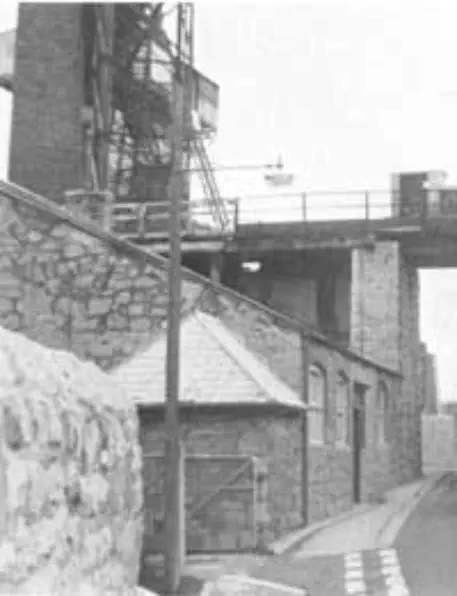
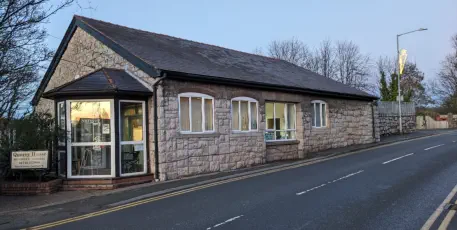
The Quarry Office in 1967, above, and the same building,
pictured in 2023, now Quarry House Surgery
The quarry ceased production in the 1980s. Some Dyserth
residents breathed a sigh of relief, for the quarry blasting had
sometimes been so strong that rocks would land hundreds of
yards away.
On 17th February 1972 Sir Anthony Meyer (MP for
Flint, West) said in Parliament:-“Quarries are a very sore
point in Flintshire at present. Last Friday a shattering
explosion of the limestone quarry at the village of Dyserth
sent huge boulders crashing through roofs and windows in
the village. Three schoolchildren were injured in their
classroom and a number of cars were totally destroyed. It
was a miracle that no one was killed. The people of Dyserth
are demanding that no further blasting be allowed at this
quarry. It is certainly unthinkable that operations should be
resumed there until the most thorough examination,
including the most meticulous geological examination of the
rock structure, has been most carefully and painstakingly
completed. Even then it is, to my mind, most unlikely that
the mining company will ever be able to give the people of
Dyserth the kind of assurances which will set their minds at
rest. Unless it can do so, I ask that all blasting operations at
this quarry should cease permanently.”
For the full Hansard article, click here For newspaper
reports click here
Click below for an account of the incident on Friday 11
th
February 1972 from Mrs Wenna Williams, Head of Infants at
the time. Recorded in February 2020
As well as quarrying there had also been a number of lime
kilns, the largest of these, Dyserth Lime Works, used to
dominate the village skyline.
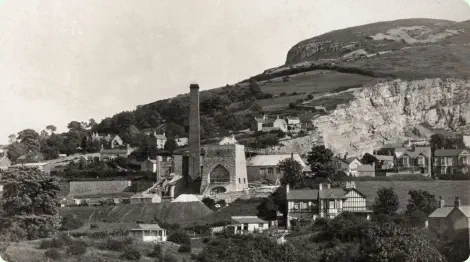
Dyserth Limeworks from a postcard posted in 1910
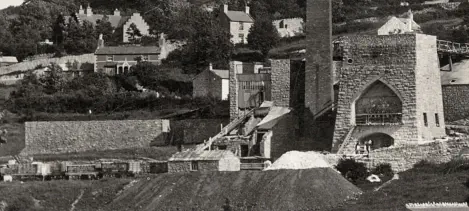
An enlarged section from the above picture - note the
railway wagons, bottom left

Some of the kilns on Upper Foel Road,
from a postcard posted in 1910
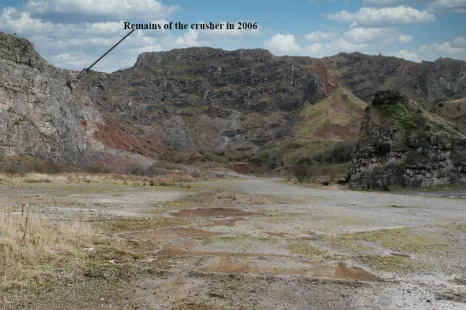
The crusher was high up on the eastern side of the lower
quarry.
It was removed in the 1980s. I took these two photos in
2006.
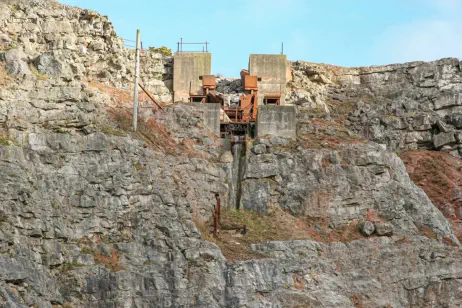
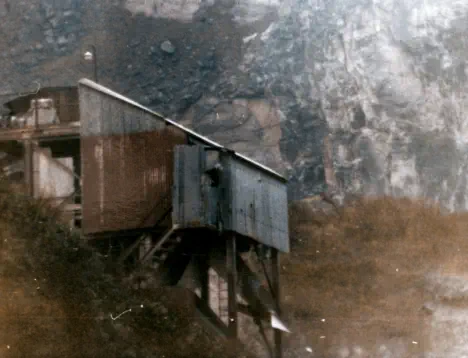
The Granulator - this reduced the stone further, to chippings
and dust, which were sent by a conveyor belt to ‘the bins’.
Dewi Jones can just about be seen in a window on the right.
Another photo by Kevin Evans.
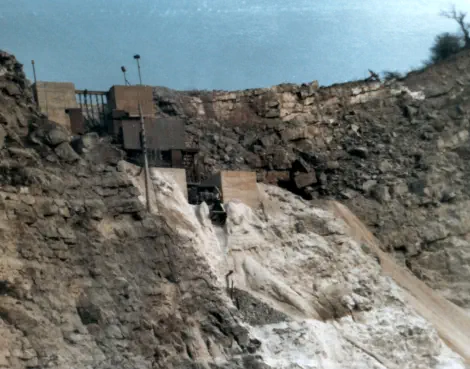
The crusher, photographed by Kevin Evans while it was still in
use - 1960 or 70s. Some of the 7-inch rock it produced was
fed to the Granulator.
The huge building - long gone - was known as ‘the bins’.The
stone chippings and dust went across on a conveyor belt, to
be loaded in to lorries. The kilns can be seen in the
background.
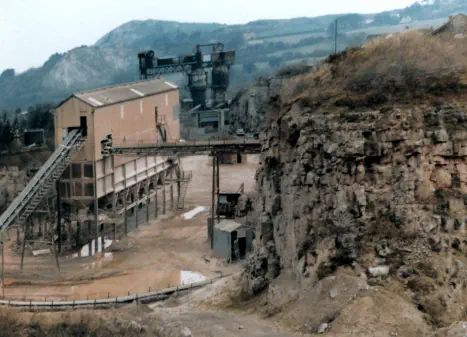
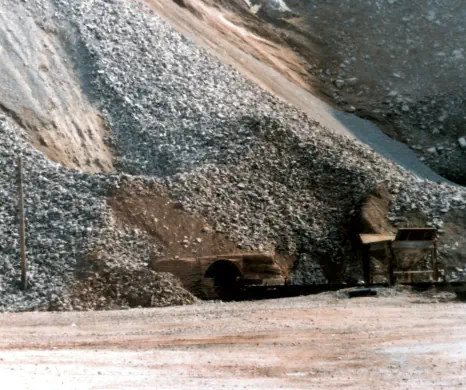
Some of the 7-inch output from the crusher didn’t go
through the granulator. It was loaded on to a small train
that ran over the road to the lime kilns on the other side of
the Trelawnyd Road.
Kevin Evans worked on the weighbridge, these are two
more of his photos, above.
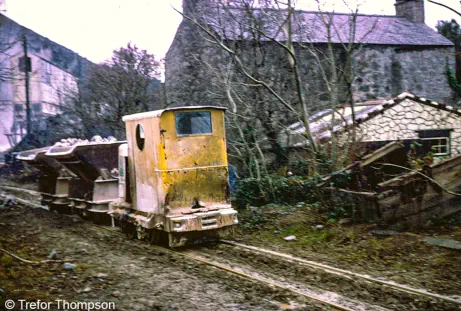
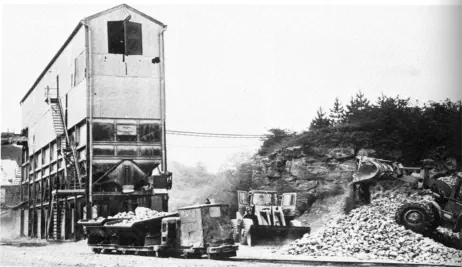
A photo from around 1973 shows ‘the bins’ with its hoppers
for loading dust and various sized chippings into lorries for
transportation to various customers.
In the foreground is the small train that carried rock over the
road to the lime kilns, also shown above.
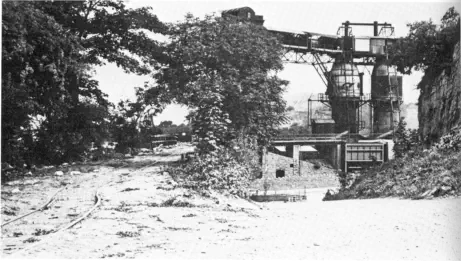
From the quarry, 1973, looking towards the lime kilns on
the other side of the road. Trelawnyd Road is just about
visible in the lower right of the picture, below the stone
wall.
The kilns in the background and in the photo below had
replaced the old stone one in the 1910 photo higher up.
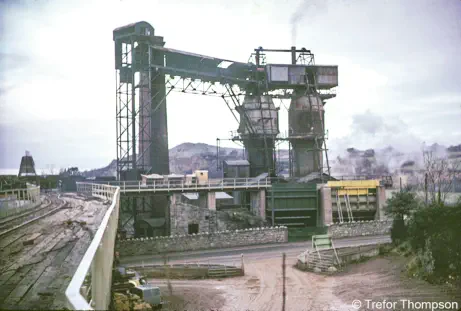
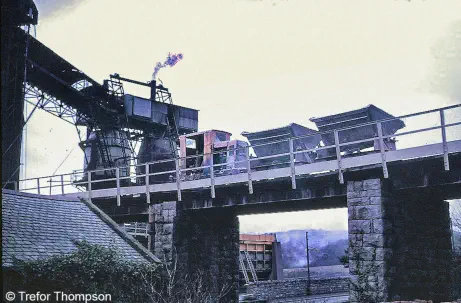
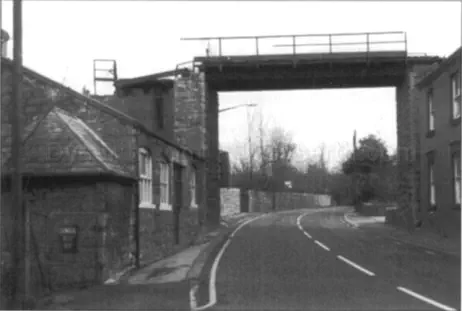
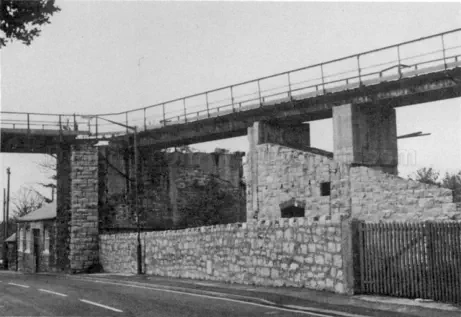
What is now the Surgery, on the left,
with the bridge that carried the light railway.
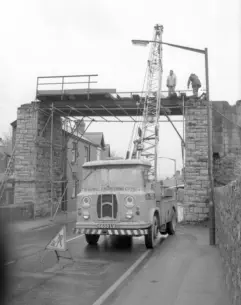
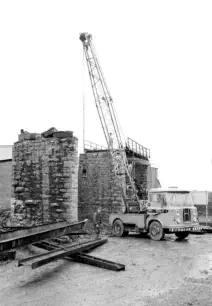
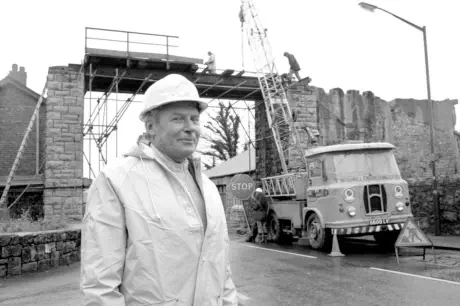
Photos from Barry Hamilton of the bridge being removed,
exact date unknown
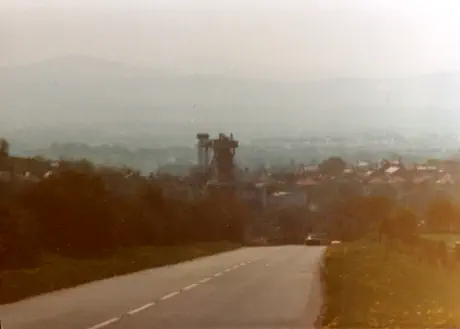
Kevin Evans
The lime kilns as they once appeared; approaching Dyserth
from Trelawnyd.
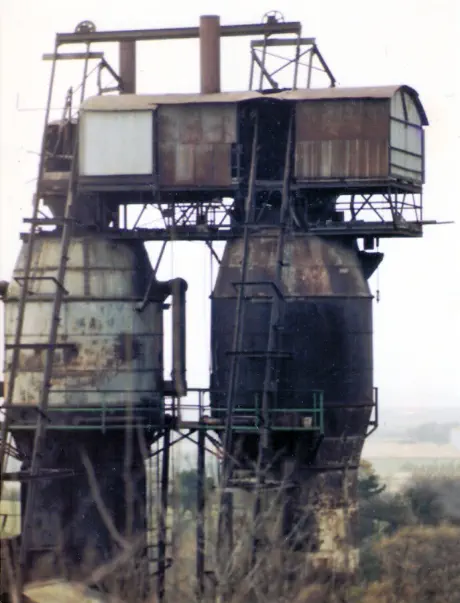
Photo from Brian Mitchell
And a picture of the kilns, taken about 1977,
not long before they were demolished.
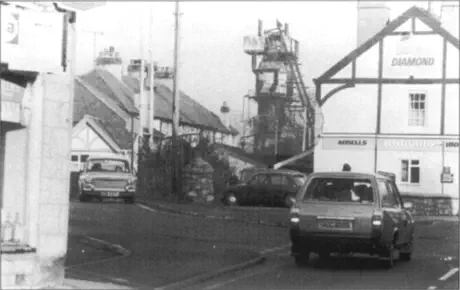
The kilns and the Bodunig from the High Street
From the other direction, the old quarry office (now the
Surgery) can just be seen through the bridge. The
bridge was demolished in the 1980s.
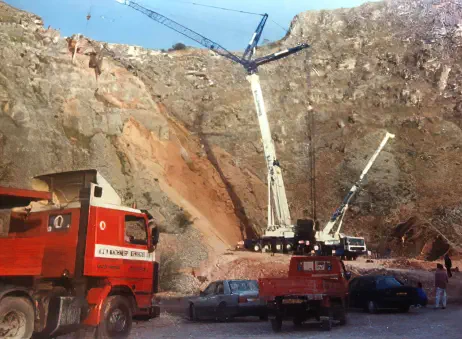
Removal of the crusher in the 1980s - photo from Gareth Rogers
There are the remains of five lime kilns along Upper
Foel Road - these are now owned by Dyserth
Community Council.
No.1 is not visible or accessible.
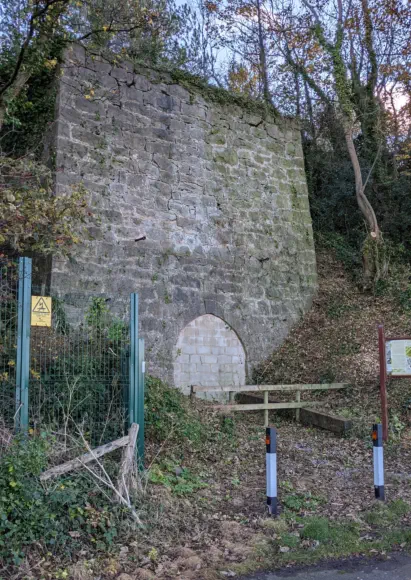
Kiln No. 2 - Grade 2 listed
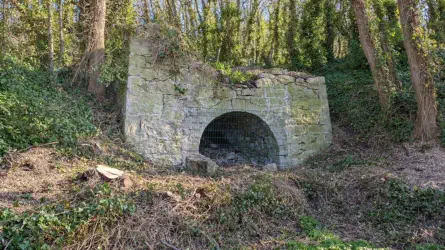
Kiln No. 3
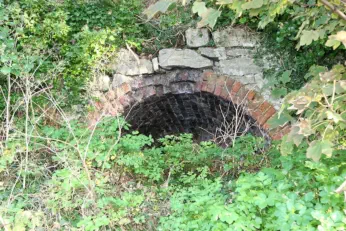
Kiln No. 5
Kiln No.2 has an information panel provided by Dyserth
Environmental Group, as shown below
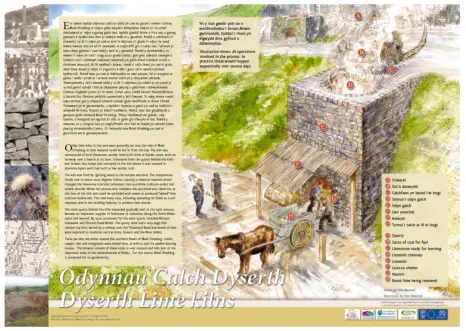
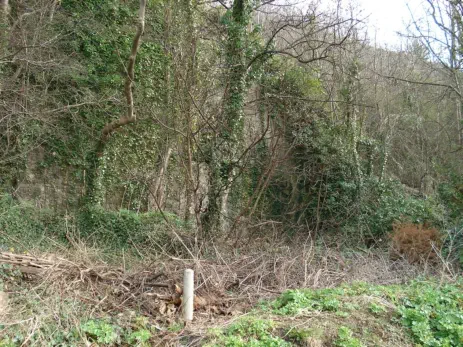
Kiln No.4 in 2009
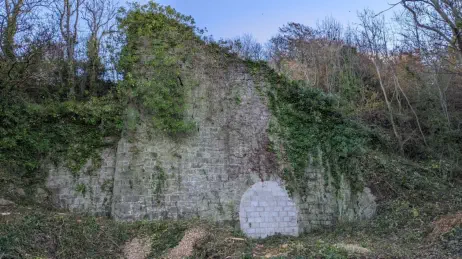
Kiln No.4 is Grade II Listed and until 2021 was almost invisible
Kiln No.4 in 2021
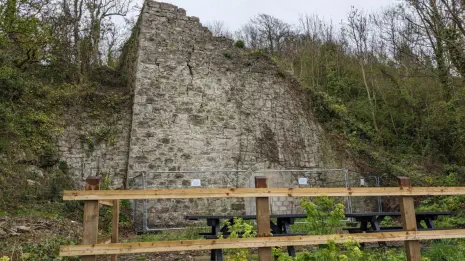
In April 2023
Quarry & Limeworks
1963 Video from Barry Hamilton
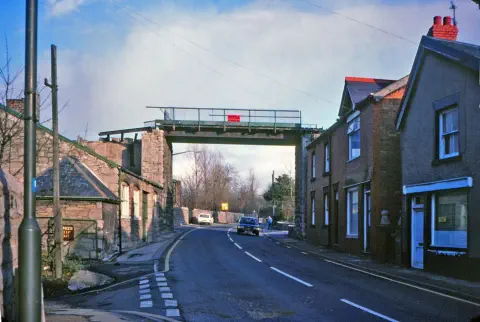
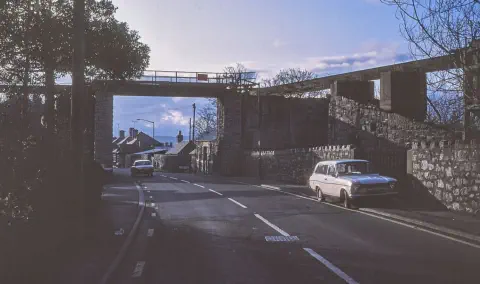
These four photos of the bridge were taken by Lucy Davies,
the colour ones were taken in 1982

From the Hants and
Sussex News,
Wednesday 29th May
1912































































































































